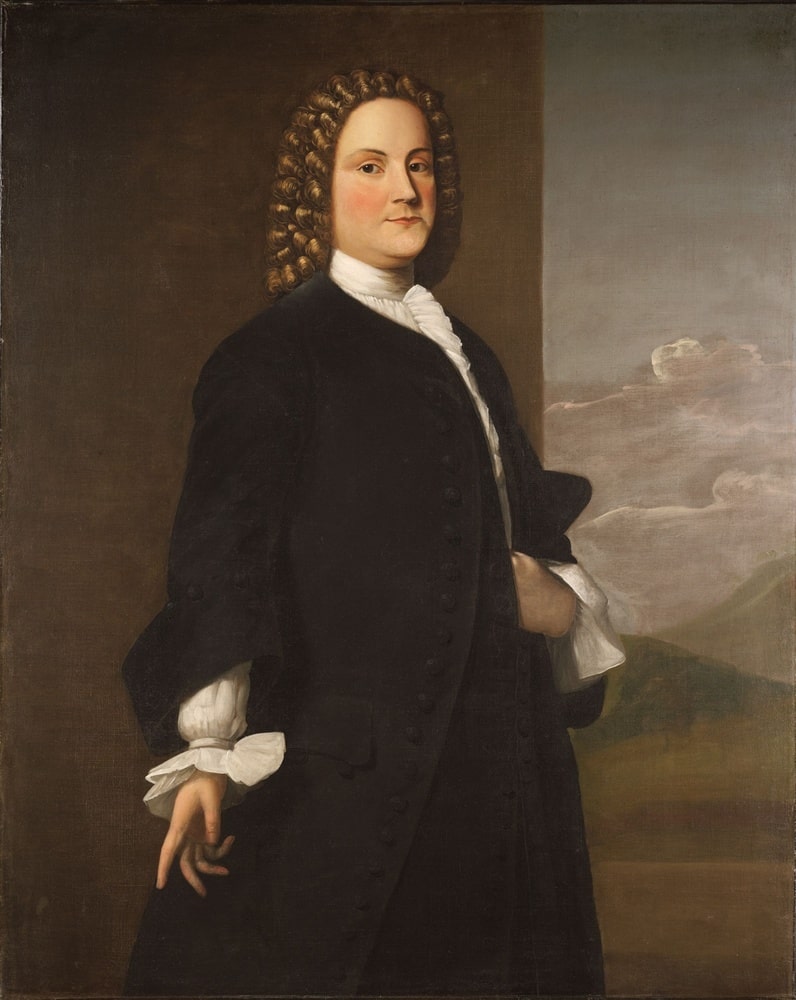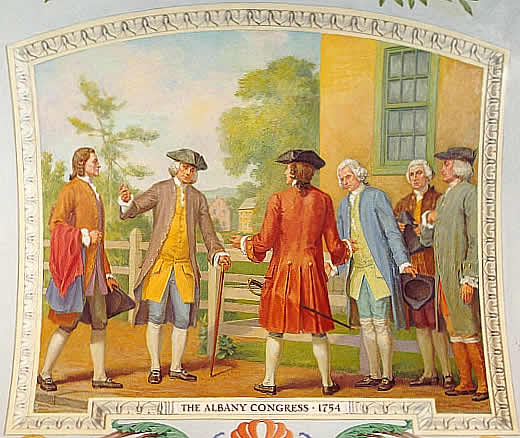Contents
Contents
The Albany Plan of Union was a 1754 proposal to create a central government for the Thirteen Colonies in North America, spearheaded by Benjamin Franklin.
Context
In the early 1750s, tensions were rising between the British and the French over control of North America.
Both powers wanted to control the strategically important Ohio River Valley, a region rich in resources that was vital for trade and settlement. This struggle for control intensified competition between the two empires and drew Native American tribes into complex alliances with either side, depending on their own territorial claims.
Eventually, this tension would lead to the French and Indian War (1754-1763).
Benjamin Franklin, who at the time was a successful printer, publisher, and civic leader in Pennsylvania, realized that to survive, the colonies needed to band together for their own protection.

Franklin campaigned heavily for colonial unity, most famously publishing a cartoon in the Pennsylvania Gazette on May 9, 1754, called Join or Die.
The cartoon showed different British colonies depicted as pieces of a rattlesnake, with each portion representing a colony, or group of colonies.
Franklin’s cartoon and accompanying commentary argued that the colonies must collaborate more closely in light of increasing French and Native American hostility. If they did not, the colonies would be destroyed.
His ideas were partly inspired by the Iroquois Confederacy’s model of governance, which involved cooperation among different tribes, while preserving local autonomy. Franklin admired this system, and it played a role in shaping his ideas for colonial governance.
Frankin’s work, although controversial, spread quickly throughout the Thirteen Colonies, and many colonial political leaders agreed that something had to be done.
Albany Congress
The Albany Congress was a meeting of colonial politicians held from June 19 to July 11, 1754.
Representatives from seven colonies (Connecticut, Maryland, Massachusetts, New Hampshire, New York, Pennsylvania, and Rhode Island) convened in Albany, New York, primarily to discuss a unified approach to relations with the Iroquois Confederacy.

The British needed the Iroquois on their side, including forces in their confederation, like the Mohawks. Without their help, they stood little chance of resisting the French Army if war were to break out.
At the Congress, Benjamin Franklin spearheaded the creation of the Albany Plan.
The Albany Plan
The Albany Plan of Union proposed a single centralized government for the colonies, which would manage common affairs, such as defense, western expansion, and relations with Native Americans.
The government would consist of a President-General (appointed by the British Crown) and a Grand Council (elected by colonial assemblies).
The amount of representation provided in the Grand Council would be proportional to the financial contributions of each colony.
The plan gave the proposed centralized government power to levy taxes for shared expenses, such as military operations and infrastructure, and also laid out how the colonies would collaborate on military strategy, to make for more effective defense.
And finally, the government would establish consistent policies for trade and negotiations with Native tribes, reducing competition and conflict between individual colonies.
The Albany Plan represented a significant change in colonial governance structures, and was quite a radical proposal. Despite this, it was adopted by the Congress.
However, the plan was rejected by the British, and the colonial assemblies, who declined to ratify it.
Colonial governments were unwilling to surrender local control over taxation and governance to a centralized authority, and the British also dismissed the plan, as they feared the colonies would become too independent and challenge British authority.
Significance and legacy
Although the Albany Plan was never implemented, it is still an important document in American history.
It was the first attempt to unite the Thirteen Colonies under a single government, acting as an early precursor to the United States Constitution, which was ratified on September 17, 1787. Certain important elements of the Constitution trace their origins back to the Albany Plan, such as proportional representation.
Many of the ideas Franklin proposed were later adopted out of necessity after the Revolutionary War broke out. The Continental Congress was formed on September 5, 1774 to provide centralized oversight of crucial colonial matters, such as taxation, treasury, and military strategy.
Franklin was ultimately right to urge the colonies to band together, but he was ahead of his time. Only once the colonists began to lose trust in the British Crown to take care of them, did they become motivated enough to create more centralized governance structures.



